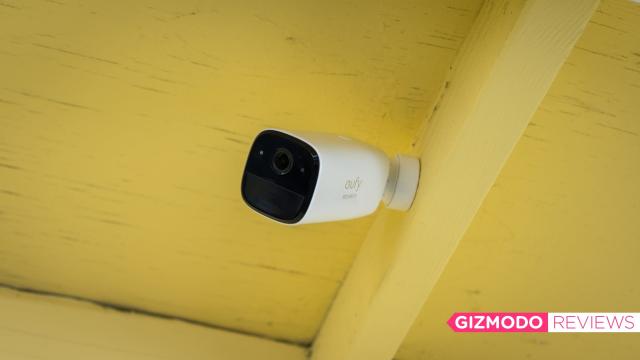When I was initially plotting out the review of the Eufy SoloCam E40, or SoloCam Pro, I was thinking about cheap security cameras, and the concessions we have to make to save money for convenience and peace of mind. I thought about what a bargain the SoloCam E40 might seem like to someone looking to expand their home security outdoors, compared to the more expensive Nest and Ring options. Eufy, a sister brand to the smartphone accessory-maker Anker, launched the $US130 ($167) SoloCam as part of a family of new security cameras. The lineup also includes the budget SoloCam Essential for $US100 ($128), plus a solar-powered camera, a spotlight camera, and a floodlight camera coming later this U.S. summer.
Editor’s Note: Stay tuned for local Australian pricing and availability.
Then, Eufy had a security breach overseas. Users in Australia and New Zealand described suddenly logging into stranger’s cameras and having full access to their live feeds and other cloud data. It’s the thing most of us fear when we’re buying a do-it-yourself home security gadget, and there are plenty of reasons to take the company’s own security practices into consideration when picking out a smart device. Eufy was quick to address the issue, but it will have to continue to navigate this issue as it pushes through a new family of security cameras. Or will it? Because just as Nest, Ring, and even Wyze have had to deal with security breaches for their respective products, the numbers show it wasn’t enough to stop the sales of devices. Some might even cynically call it a mark of initiation.
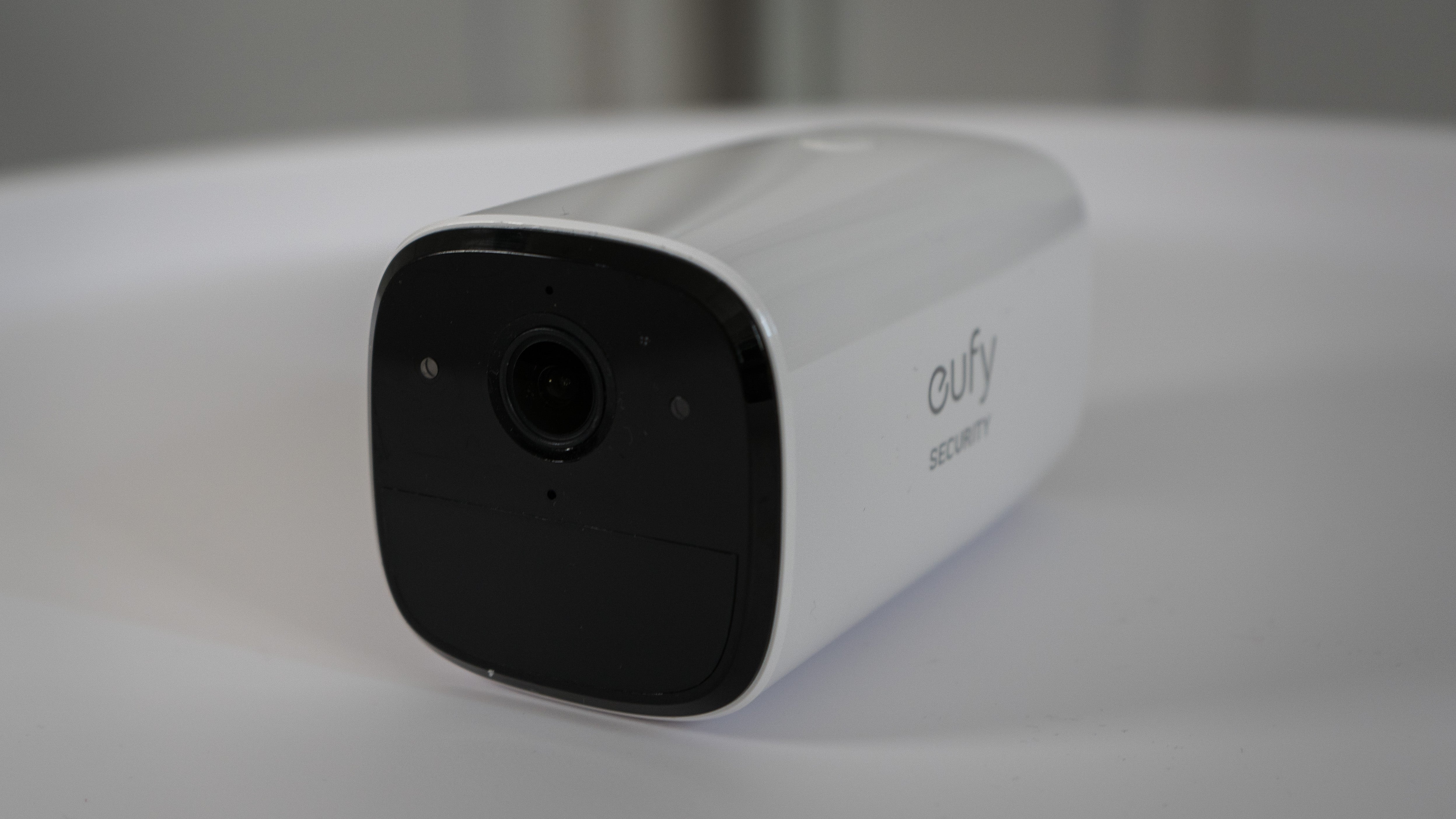
Eufy SoloCam E40
What is it
A smart security camera
Price
$US130 ($167)
Like
Easy to install, doesn't rely on a hub, and features a loud siren
Dislike
Night Vision has trouble focusing if the picture isn't clear, it relies on a 2.4GHz wifi connection, and the app could use a little refinement
That’s all to say, there’s plenty to consider as you shop for a security camera, from how secure its cloud service is to how clear the resolution is on the picture. For those worried about security breaches, the good news is that Eufy has implemented two-factor authentication for the newly released SoloCam E40. You can choose to receive a code by email or text message before you’re logged into your account. It helps add another layer of security, so you know if someone unauthorised is attempting to log in to your account. But after nearly a week of testing, it’s clear this standalone security camera has some iterating to do before it has the same consumer trust as more prominent brands.
Small Little Security Camera
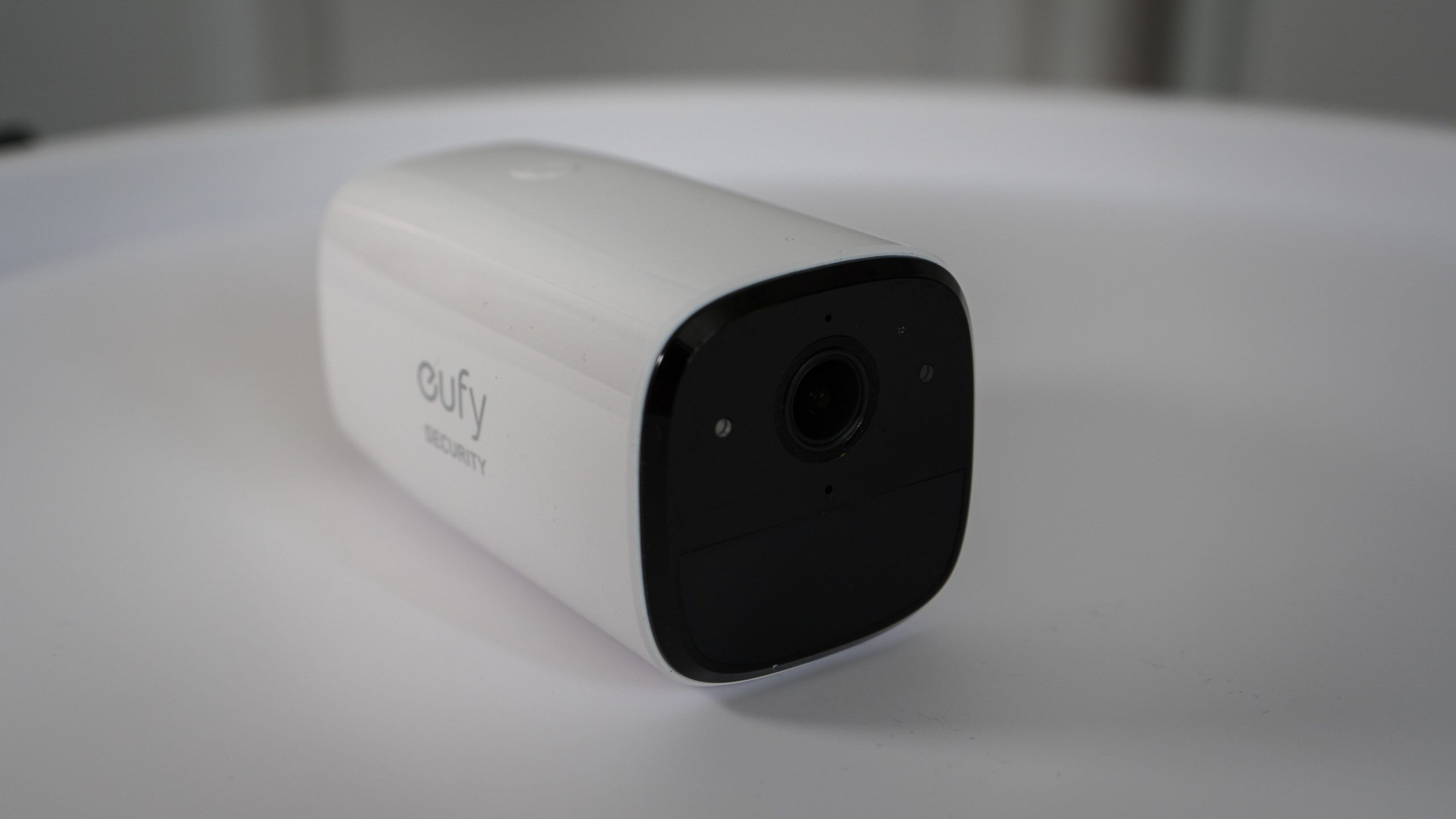
The Eufy SoloCam E40 is a compact little security camera. It ships with a MicroUSB charging cable and the hardware you need to mount it. (There are no other wires except for when the MicroUSB cable is charging the device.) Note that there’s no power brick in the package, so be sure you have a USB phone charger on hand that can handle charging the SoloCam E40. Fortunately, according to Eufy, you’ll only need to charge it every four months.
The SoloCam E40 comes in a pearlescent white colour, which looks nice but will probably require cleaning from time to time. The front of the device is black, and it’s dark enough that it only sort of conceals the camera lens from passersby. However, as far as outdoor cameras go, the Eufy is less conspicuous than the boxy Ring outdoor security camera, for example. It’s also smaller than TP-Link’s similarly priced outdoor camera.
The SoloCam E40 packs quite a few features in its small package. This includes 8GB of onboard storage, 2K resolution for both day and night vision, motion detection, customisable activity zones, two-way audio, and what Eufy calls “AI-powered human detection.” However, there’s no microSD slot for storing additional footage. You’ll want to pay mind to the camera resolution if you plan to do long-term motion detection and surveillance.
The SoloCam E40 is IP65 rated and can handle extreme temperatures ranging from -4- to 122-degrees Fahrenheit. There’s also a 90-decibel alarm to help ward off intruders, and it’s on by default if you plan to use the camera’s differing security modes. There are no exterior LEDs on the SoloCam E40, so you’ll need additional lighting if you use it outdoors, like a streetlight or flood lamp. Night vision activates automatically by default, but it can be turned on and off from the settings menu. Eufy says the SoloCam E40 can capture night activity up to 8 meters out, or 7.92 m ahead.
Easy Installation
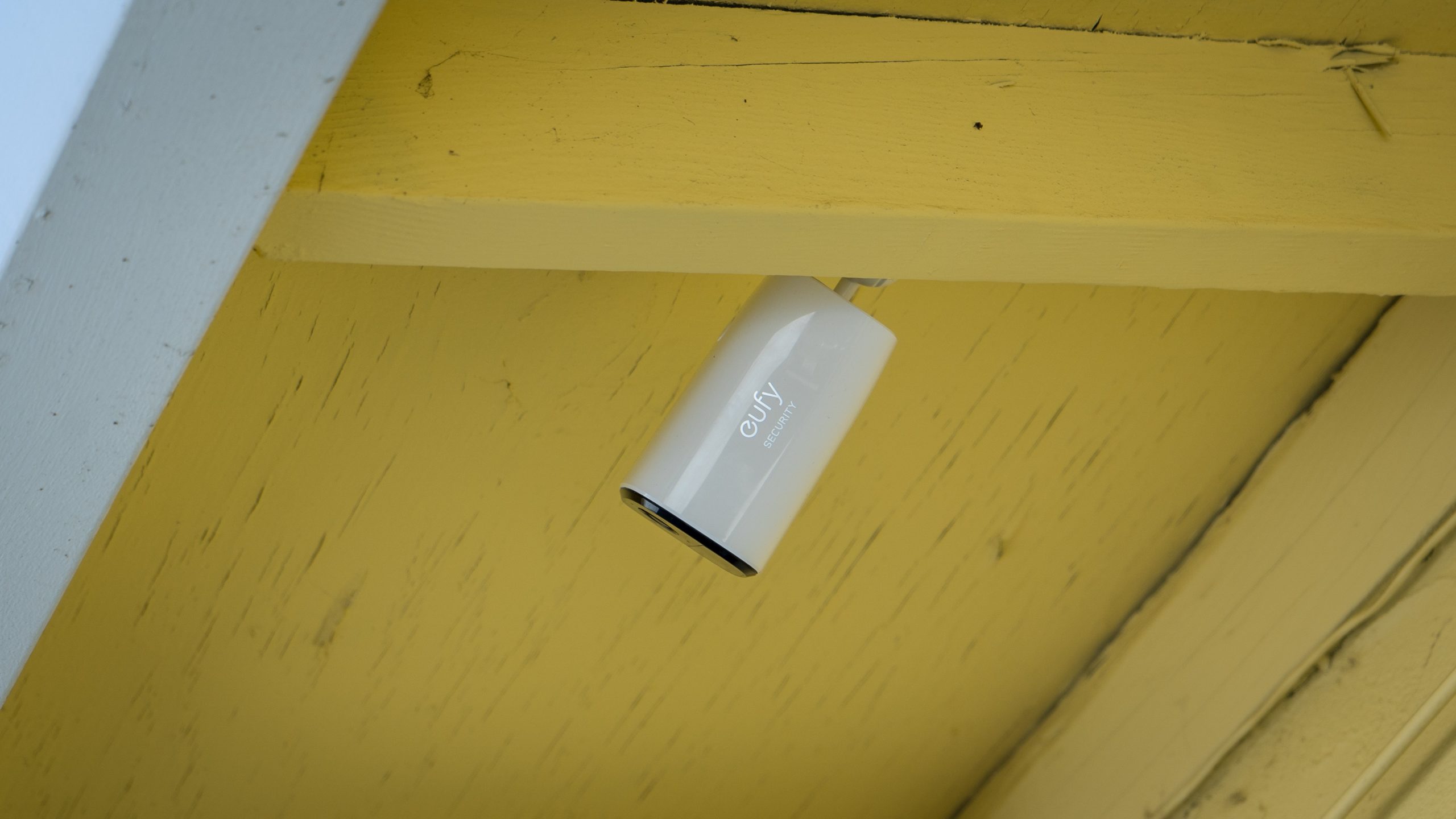
The Eufy SoloCam E40 is easy to install regardless of your level of smart home expertise. For best results, make sure to connect it to the network before attempting to mount it anywhere. It needs to be connected to wifi to properly work, and you might even test if your router can reach the other side of the wall.
Setup with the Eufy app is straightforward, especially since the SoloCam E40 doesn’t require a hub like some of Eufy’s predecessors. Follow the prompts to sign up for a EufySecurity account, which will ask you to enable two-factor authentication once you’re fully registered.
Then, it’s time to add the SoloCam E40 to the wifi. You’ll have to generate a unique QR code for your phone to display so the camera can scan it to get on your network. This setup method is a relatively new practice by smart home manufacturers, and it can get a bit fussy if the camera you’re configuring can’t read the code, which is why I suggest waiting to mount the device until after setup. On the plus side, the QR code method worked on the first try. One minor caveat to note — though it’s par for the course if you’re a smart home veteran — is that the SoloCam E40 requires a 2.4GHz wifi connection.
The SoloCam E40 comes with the bracket and screws you need for mounting it on a wall or ceiling. Eufy suggests selecting a location 7-10 feet above the ground. I’d also recommend using a power drill to get the bracket installed outside because the manual method will do a number on your wrist. Otherwise, if you plan to use the camera for security indoors, you can simply place it where you need it. If you need to charge the SoloCam E40 and you want it to continue to surveil while it’s doing so, be sure to install the device near a plug or you’ll have to dismount it every time you charge it.
I tested the Eufy SoloCam E40 with Google Assistant, though it’s also compatible with Amazon Alexa. You can link the EufySecurity account through the Google Home app, where it will require that you set up a six-digit PIN before the device will execute voice commands. Most new security devices that integrate with digital assistants require this kind of security to ensure no one is peeping through your camera viewfinder or unlocking doors without you realising it. Because, as I mentioned earlier, these sorts of things can happen.
The Perks and Pitfalls of the EufySecurity App
The EufySecurity app is separate from the similarly-named EufyHome app, and it’s what you’ll use to control the Eufy SoloCam E40. The home screen of the app displays a preview thumbnail for any camera that’s connected. There are quick status indicators for wifi and battery life, plus a button for quick access to notifications, alerts, and the settings panel. There is a docked menu on the bottom with a button for recent events and security enforcement. If you decide you need more cameras, there’s also a section devoted entirely to Eufy’s online store.
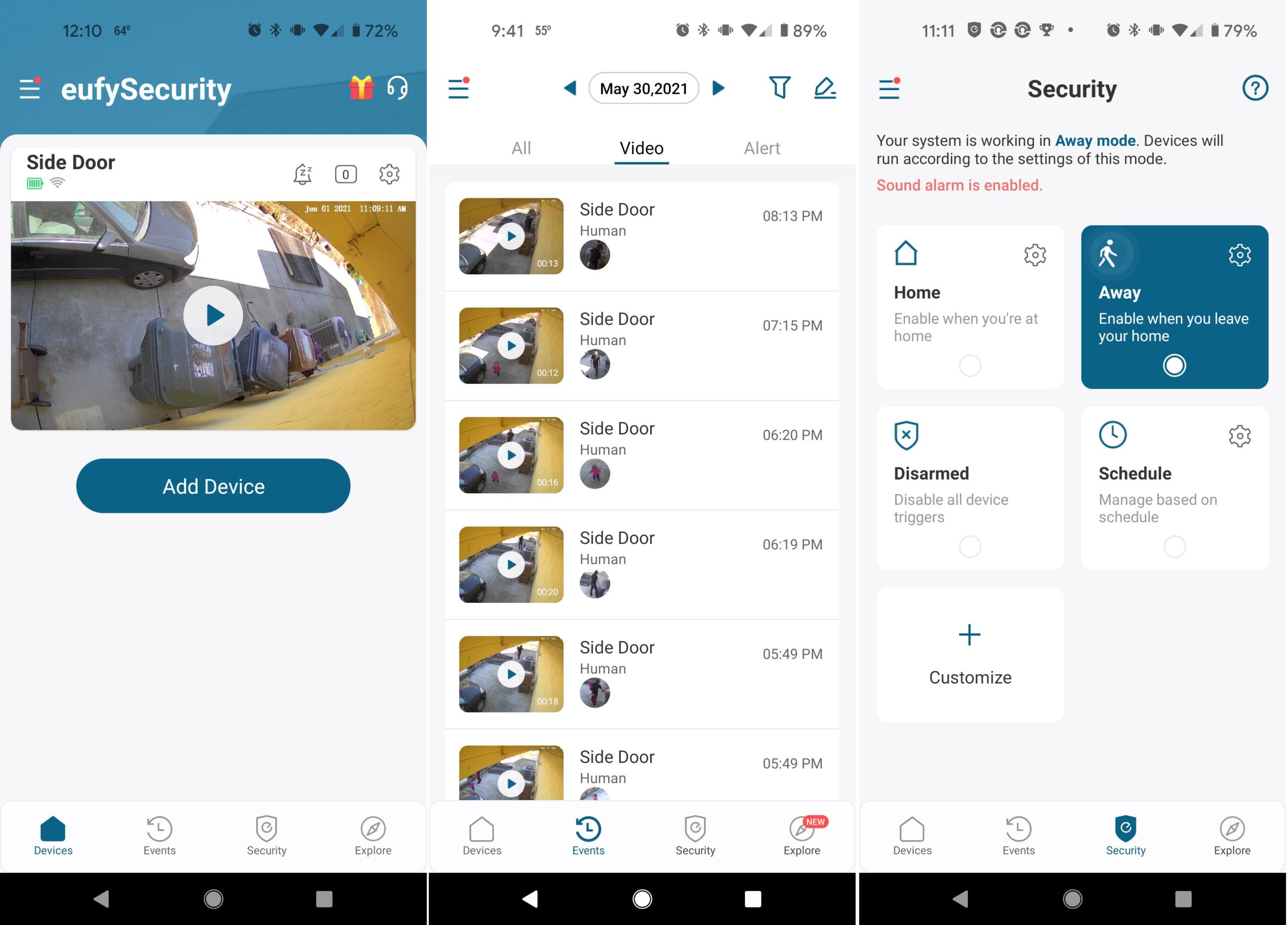
I’ve only been testing and tinkering with do-it-yourself security devices for a few years, but I find that the best apps are the ones that keep the main function front and centre. After about five days of use, I haven’t developed an instinct for where to tap in the EufySecurity app when I need something a little more specific than a video preview. If the interface were a little more organised, the EufySecurity app could appear as minimal and simplistic as Eufy’s devices.
There’s an additional hamburger menu off to the side, which you can expand for options like adding family members and guests to access the security camera and adding cloud storage and professional monitoring. Since there’s no storage expansion slot, you might consider the $US3 ($4)-a-month or $US30 ($38)-a-year basic option, which lets you store 1080p video for one device for up to 30 days. There’s also a higher tier at $US10 ($13) a month or $US100 ($128) a year that covers up to 10 devices.
Professional monitoring is priced in the same vein, with the basic plan offering emergency assistance at the touch of a button for $US5 ($6) a month and $US50 ($64) a year. There’s another tier that’s $US10 ($13) a month or $US100 ($128) a year, but it’s catered toward Eufy’s full-featured security system, including monitoring for doors and motion sensors, plus false alarm forgiveness. It might seem absurd to pay for professional security at the basic tier, but emergency dispatch in the U.S. is often outsourced, leading to delays in obtaining help. Not to mention, due to the prevalence of false alarms, police departments around the U.S have adopted “verified response policies” to only respond if there’s a verified crime in progress.
Surveilling Trash
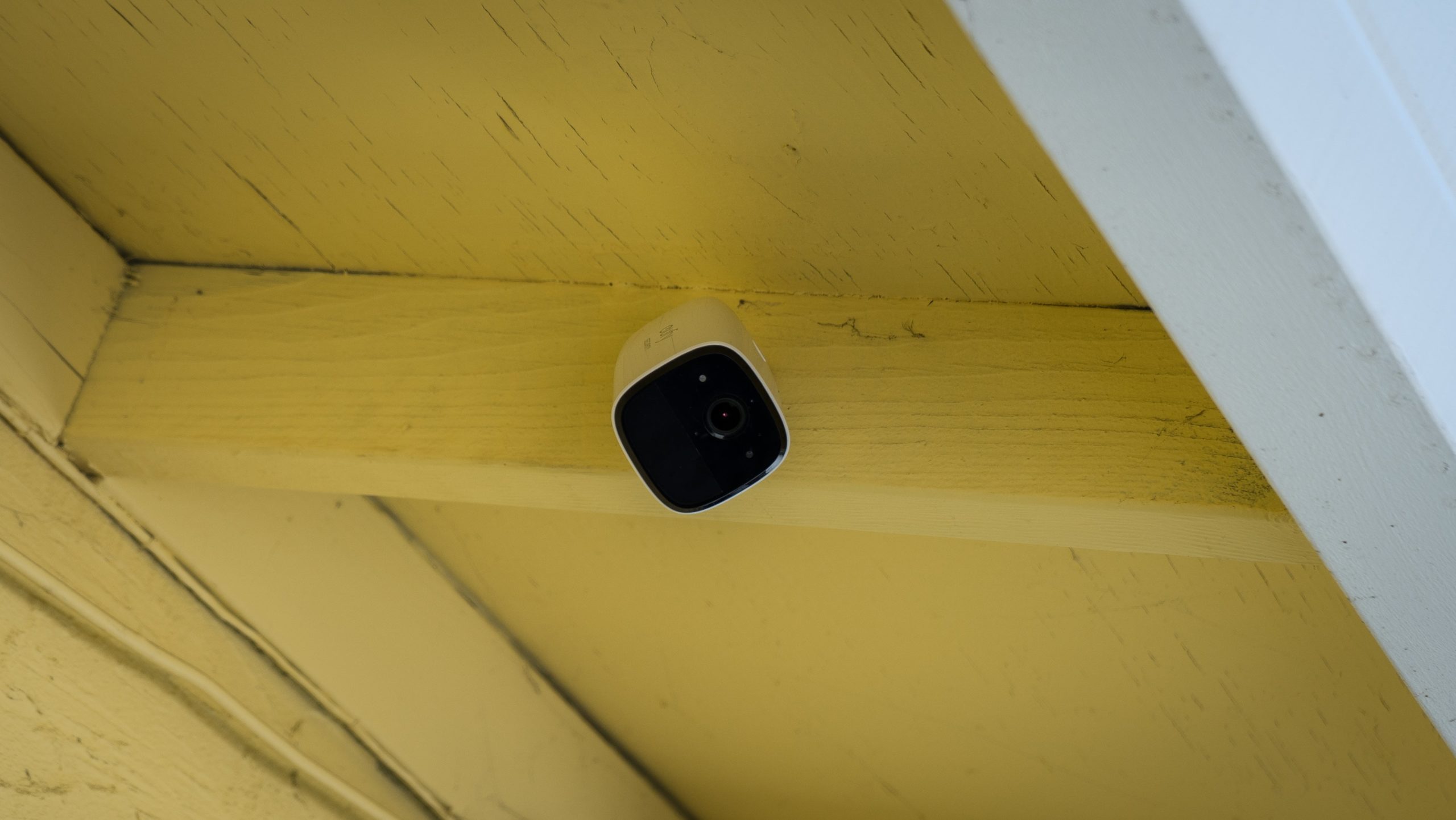
I tested the Eufy SoloCam E40 on the side of my house, where we park our four available rubbish bins when they’re not out on the curb for pickup. I live in a suburb where fences are merely a suggestion, and you never know who is going to walk on by — and I don’t specifically mean people, because if you listen out the window at dusk, you can hear the siren call of coyotes traipsing the neighbourhood and looking for scraps.
I bring up this specific situation as an example of the kind of thinking that might drive your decision to buy a friendly-priced security camera like the Eufy SoloCam E40. For my particular situation of watching over my trash, the SoloCam E40 did the deed just fine. I even set up the activity zones so that the camera knew to look for activity leading out the side door. Through push notification, I knew immediately each time my husband was taking out another bag or when my kid was sneaking around to play. Even though my office windows face that side of the house, I appreciated the convenience of checking in and panning around the scene. The SoloCam E40’s video resolution is even detailed enough to see the sun-stroked cracks on every trash bin.

When we’re out with the kid, I set the SoloCam E40to “Away” mode to account for any unexpected trash activity. By default, this will sound off the 90-decibel alarm once it detects movement. I didn’t test the professional monitoring service, so I can’t speak to how that would have worked with dispatch. But I definitely jumped when I heard the alert go off, and I’m pleased to know there’s a simple way to make a loud, distracting sound without having to deal with shouting through the microphone. Unfortunately, I ran out of time to test if the SoloCam E40 works with Google and Nest’s “Away” mode, and I wasn’t able to pair it with a smart home routine.
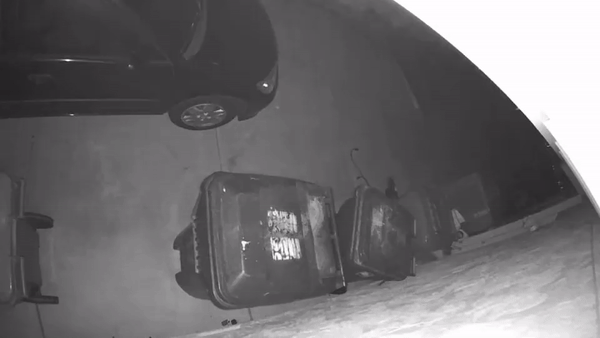
My concern with the Eufy SoloCam E40 is that if it’s not properly positioned, the camera flickers back and forth between night vision and day vision, making it hard to see what’s going on in a recorded clip. The culprit is how I have the camera positioned. It’s bouncing the infrared signal off of part of my roof, which makes it difficult for the SoloCam E40 to maintain its exposure. Until I can adjust it again, I’m leaving the light on in the side yard to check out what’s going on at night. You might consider pointing the SoloCam E40 so that it has a clear view, with no other objects to capture as focus points.
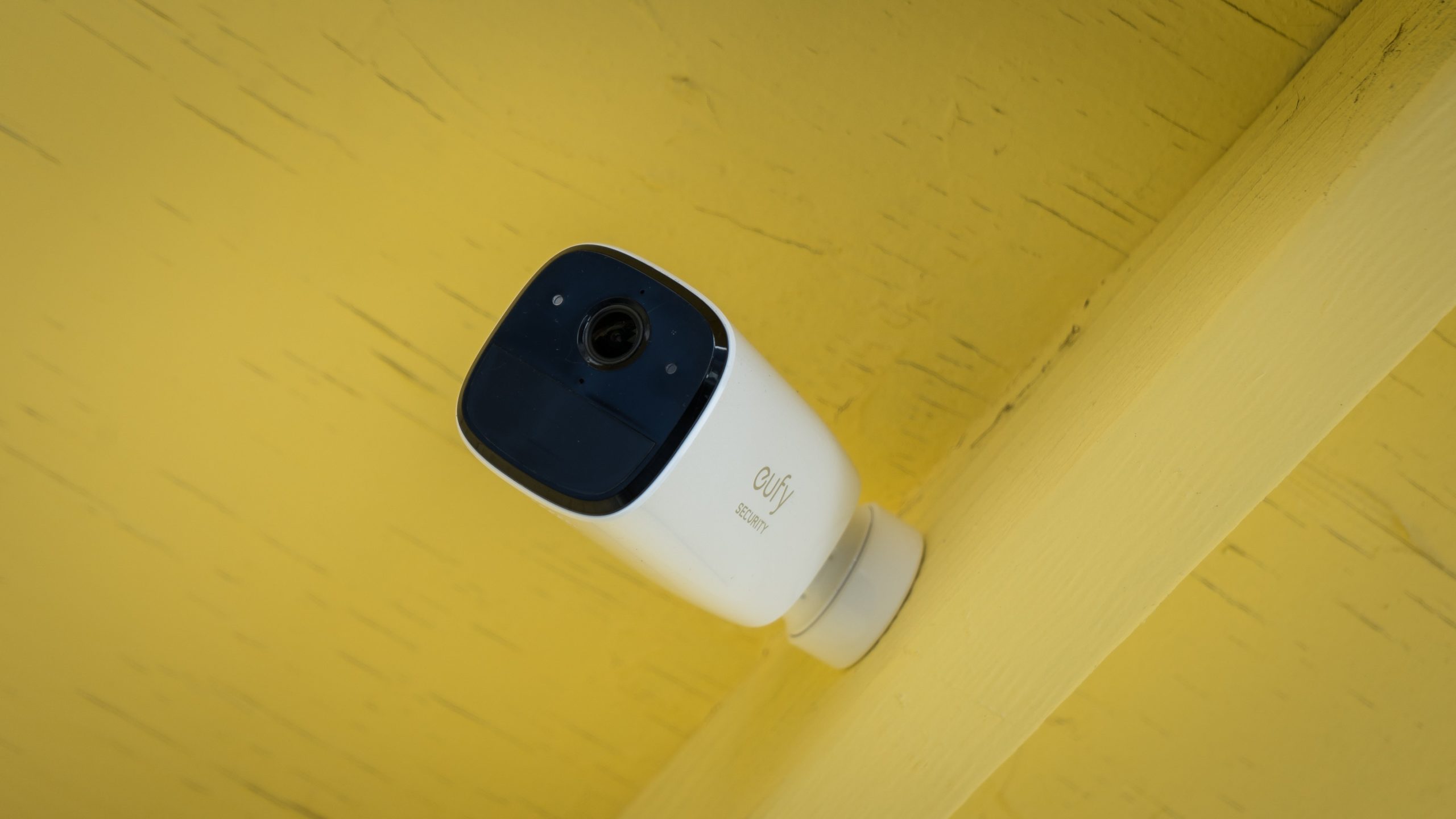
If you need a simple camera out in the backyard or in the garage to check up on things, you don’t have to drop a ton of cash. The Eufy SoloCam E40 offers several features the high-cost brands do, including high-resolution night vision, a loud siren, optional cloud storage, and third-party smart home integration. But despite the attractive $US130 ($167) price tag, it’s hard to get excited about do-it-yourself home security when there is news that makes you feel insecure about the brand you bring home.
Eufy has a chance to establish itself as a secure budget security brand of sorts, and it’s trying. The company updated its privacy policy and recently received the ISO 27001 and ISO 27701 Certification necessary to meet the minimum standards required by GDPR. All it needs to do going forward is be a little more explicit about what’s going and what it’s going to do next to make its lineup of new security cameras a hit.
